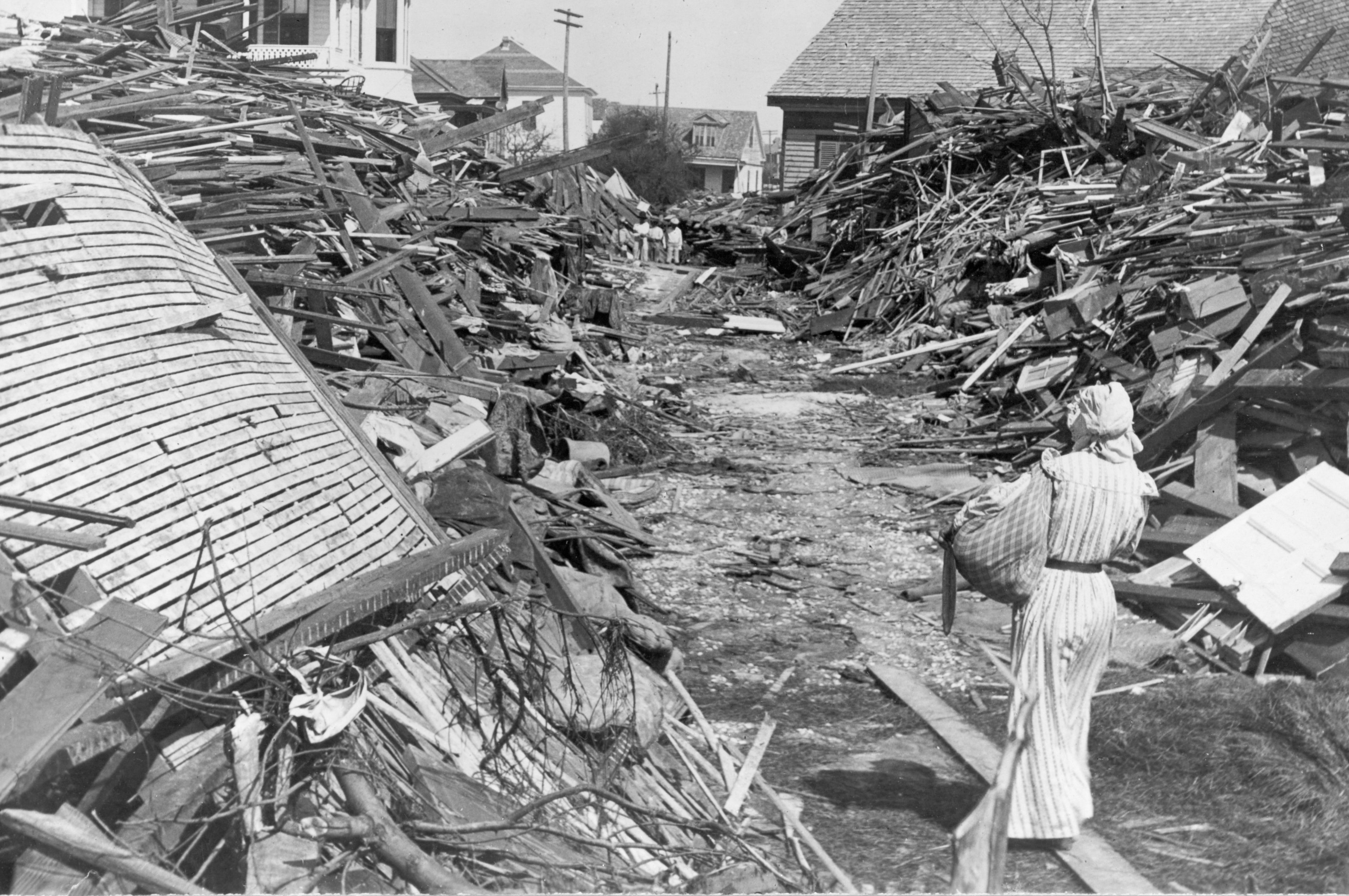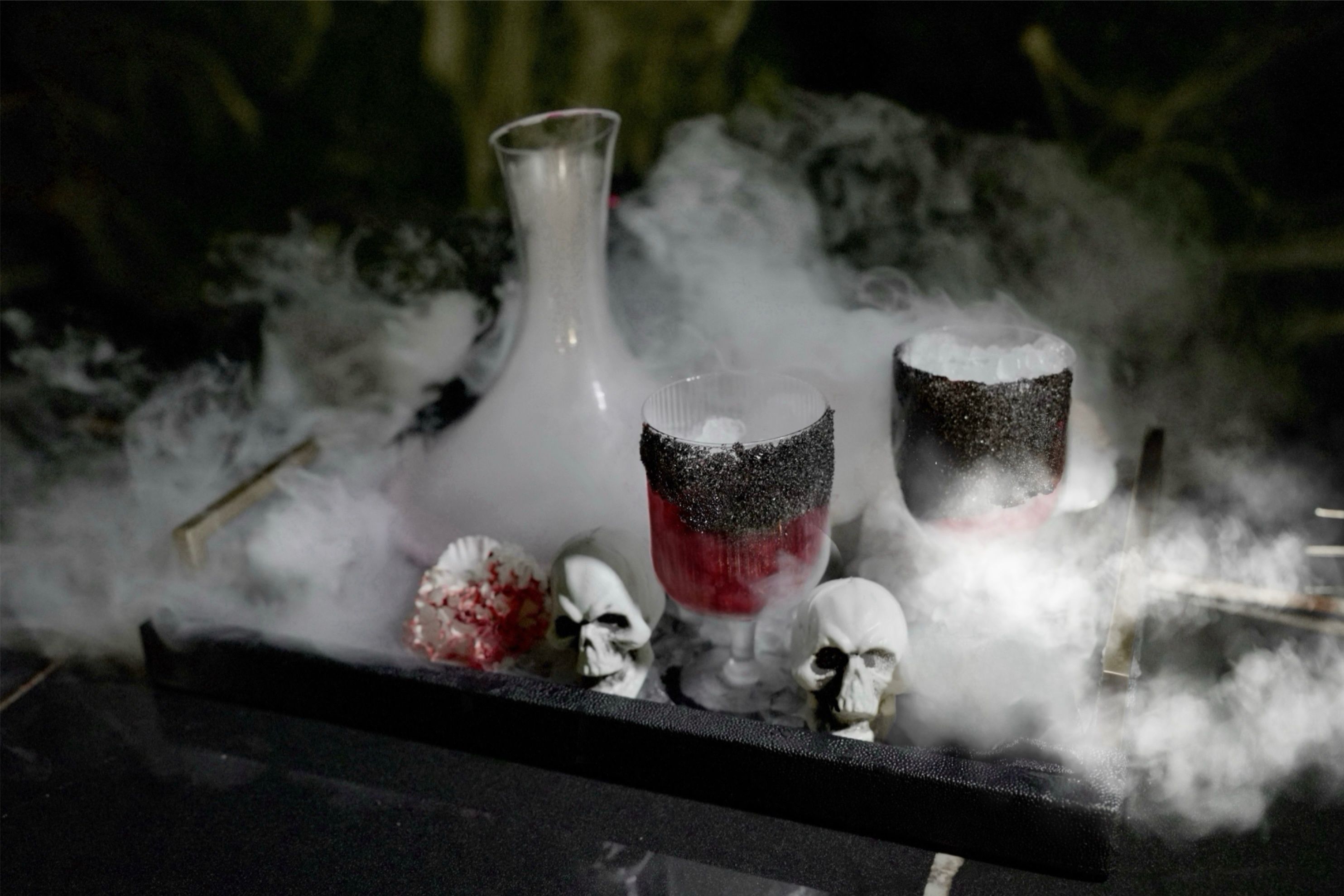The Ghostly Legends That Still Haunt Galveston

With spooky season here, October is the perfect time to join a ghost tour of Galveston Island. Long considered one of America’s most haunted places, the island is filled with chilling tales.
As the travel editor, I decided it was time to test my fear factor with Historic Galveston Ghost Tours. The 90-minute experience went beyond the expected stories, which typically include Hotel Galvez and Moody Mansion. Instead, tour guide Dave Warner took me to lesser-known spots—places I would’ve never guessed had such extensive and tragic histories. But first, Warner filled us in on why this 32-mile stretch of land is considered so haunted.
The 1900 storm
First chartered in 1839, Galveston Island was intended to be Texas’s first port, but following its founding, it boomed. To meet demand, the historic Strand was formed, with most of its buildings popping up between 1875 and 1899. The area quickly became known as the Wall Street of the Southwest. Some believe that Galveston, complete with its own Red-Light District, was on its way to becoming a mini-Manhattan or smaller Las Vegas (look into the Maceo family for more information on this).
Then came the great 1900 storm on September 8. That night, more than 3,000 people scrambled to the center of Broadway Street, the island's highest point. But standing 8 feet above sea level was no match for the 120-mph winds and 16-foot storm surge that submerged the island (hence the now 17-foot-high seawall).
The hurricane wiped out the island overnight. Historians estimate between 10,000 and 12,000 people died, at least 6,000 of them in Galveston. Bodies were stacked in the remaining buildings on the Strand, functioning as makeshift morgues; others were loaded onto barges and sailed into the Gulf of Mexico, but mornings later, some of the bodies returned, washing back up onto the island in worse condition. The community recruited every able-bodied male over the age of 13 to gather the body parts into piles and then burn them. Bones are still buried around the island, which helps explain why Galveston is widely seen as haunted.
But what is it like embarking on one of these tours where it’s possible to have a brush with the supernatural? While I won’t give away all the details of the tour, here are some of the ghost stories you can expect.

Image: Sofia Gonzalez
Ashton Villa
Warner began the tour with this storied 1859 Broadway Street mansion, which is said to be haunted by one of the island’s most famous ghosts: Bettie Brown. In 1861, during the Civil War, the Browns donated their home to the Confederate cause, turning it into a hospital for wounded soldiers, many of whom died of yellow fever, along with some doctors and nurses. Once the war was over, the Browns moved back into their home and started their family.
Five years after Mr. James Brown’s passing, the 1900 storm hit. Mrs. Brown and her two daughters, including Bettie, saved the home and other Galveston residents by opening the windows to let the floodwaters in. After Mrs. Brown died of natural causes, Bettie, wealthy, well-traveled, and fiercely independent, lived in the home until she died in 1920 from Lou Gehrig’s disease.
The home and everything it contained were later sold to a local chapter of the international fraternity organization El Mina Shrine. Members reportedly began experiencing paranormal activity: Objects were moving on their own. They heard footsteps, voices, and knocking, and felt random cold and hot spots inside the space. The creepiest story involves a travel chest. The family tried in vain to open the chest. Before breaking into it, the chest opened on its own. Inside were Bettie’s souvenirs and mementos. The next day, the family found the chest sealed shut again. Their explanation? Bettie’s ghost.
In the 1970s, the Galveston Historical Foundation transformed the home into a self-guided museum, but now, it’s used as an event space. During its stint as a museum, visitors reported seeing Bettie’s ghost in a Victorian dress, sometimes gazing from the windows.
Robert Durst’s home
For a stop that ties Galveston’s haunted lore to a modern true-crime story, visit this haunt.
Born in 1943 to a couple in Manhattan, Durst should’ve had his life made for him (his family ran the Durst Organization, a wealthy real estate company). But his life took a different turn when, at age 7, his mom jumped off the roof of their family home, leaving Durst with what he described as severe trauma. He later became estranged from his family to pursue his own health-food store.
He married a woman named Kathleen McCormack, but nine years into the marriage, she disappeared. Many people came forward, alleging that Durst had been abusive, but with no substantial evidence found, Durst continued living his everyday life.
McCormack’s case was reopened in 1999, and in an attempt to flee related charges, Durst moved to Galveston and began dressing as a woman to disguise himself. According to the HBO show The Jinx: The Life and Deaths of Robert Durst, Susan Berman, an old college friend who served as Durst’s “spokesperson” of sorts, was scheduled to be interviewed about McCormack’s death in 2001, but before they could, she was found dead in her Los Angeles home.
Investigations later revealed that Durst had driven from Galveston to Berman’s home in LA, where he shot her execution-style to avoid being caught for the first crime against his wife. Roughly a year later, Durst murdered and dismembered the body of his 71-year-old Galveston neighbor, Morris Black, who was later found in Galveston Bay.
Durst was acquitted of that murder in 2003, but in 2015, The Jinx helped put him away. Spoiler alert: In the final episode of the first season, Durst can be heard admitting to the murders in the bathroom thanks to a hot microphone he didn’t realize was still on. “There it is. You're caught,” he says to himself. “What the hell did I do? Killed them all, of course.”
Durst’s home is now a popular pit stop on Galveston ghost tours, with many claiming they’ve seen Morris Black’s spirit lurking nearby.
Disclaimer: This is not a deep dive into the case and omits some details. While the true-crime aspect is intriguing, it’s important to honor the victims’ stories. To learn more about the case, check out the HBO docuseries or read up on the story here.

The Mansard House
Once known as the Smith-Perry Boarding House, this 1912 property initially operated as an inn. The story goes that the mother was downstairs when she heard a long, drawn-out scream from her son, followed by a loud crash of glass. When she ran upstairs to see what had happened, she discovered that he had leapt through the glass window. Though seriously injured, the boy lived to tell the tale, explaining that he had run through the window “because he was telling me to kill you all.”
Over the years, the building continued changing hands, with each owner reporting ghostly activity, including disembodied screams, voices from empty rooms, and objects being smashed against the walls.
In 2002, while the house was closed for major repairs, a group of boys broke in to goof around. One of the boys, who went up to the third floor alone, jumped out the window—eerily echoing the earlier event. But when he awoke from his coma, he had no recollection of being in the home.
The home sat abandoned for several years, but stories persisted. A tour guide says that around a decade ago, a foul odor began emanating from the house, prompting police to investigate. Inside one of the rooms, they found animal carcasses, a creepy altar inside a painted pentagram with candles, and several Satanic symbols and verses painted around the room.
Today, the owners of the Mansard House, a 12-room, adults-only boutique hotel, deny any haunting, but we’ll leave that up to you to decide.

Image: Sofia Gonzalez
The Waters Davis House
Another survivor of Galveston’s 1900 hurricane, this home (and practically the whole block it sits on today) once belonged to Waters Davis, a wealthy man who often traveled to Egypt in search of antiquities. In 1904, he brought back one of his most prized purchases: a mummy.
Oddly, this was a thing in the early 1900s: Wealthy men would purchase mummies and host unwrapping parties, while others ground the mummified bodies into powder, mixed that into an elixir, and drank it. In Mr. Davis’s case, he wanted his mummy on display. He placed it in an airtight glass container and invited neighbors and family over to admire it. A year in, though, the container didn’t prove to be as airtight as he thought. Galveston’s humidity caused the mummy to mold and smell. When Davis’s wife gave him an ultimatum (“It’s either the mummy or me.”), Davis buried it on his property, where it’s never been found.
The home’s current residents claim they’ve experienced inexplicable events and paranormal activity, and there are conspiracy theories on the island linking it to the former Smith/Perry Boarding House.
The Virginia Point Inn
The same Walter Davis who bought a mummy built this inn in 1907 as a gift to his daughter, Sarah, who, some claim, has never left. Guests have reported seeing her standing at the top of the inn's stairs, as if to greet them. Others have claimed to spot her out of the corner of their eyes.
Extra spooky tales:
Warner claims he’s never seen an actual ghost, but two spots on the island freak him out most, including Antique Warehouse on 25th Street, which formerly housed a brothel on its second floor. Though there are no specific spooky stories to share, Warner says he always feels a heavy presence when he walks in there.
Sea Hag Vintage on 26th Street is another. Once home to Mob Bar (no, it has no literal known ties to the mob), this spot was once known for its burlesque shows and Prohibition-inspired drinks. Warner says walking in makes him feel heavy, as if spirits are all around. Previous managers of the space have told Warner they’d hear crowds and children crying there, even though it was empty, and that plates would randomly smash against the wall.
Of course, these could all be tall tales—who knows? Whether you meet Bettie Brown, Morris Black, or Sarah of Virginia Point, remember this: In Galveston, history has a way of hanging around.




